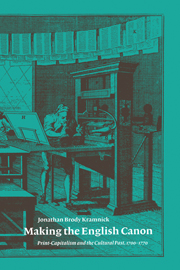Chapter 2 - The mode of consecration: between aesthetics and historicism
Published online by Cambridge University Press: 22 September 2009
Summary
The more art becomes an autonomous sphere, which happens as a result of lay education, the more art tends to acquire its own set of constitutive values … But the conscious discovery of uniquely aesthetic values is reserved for an intellectualist civilization.
Max WeberThis is not the place to investigate the ever-increasing importance of aesthetics and the theory of art within the total world-picture of the eighteenth century. As everywhere in this study, we are concerned solely to throw light on the social and historical background which threw up these problems and conferred upon aesthetics and upon consciousness of art philosophical importance that art was unable to lay claim to in previous eras … What is crucial here is the theoretical and philosophical importance which the principle of art acquires in the period.
Georg LukácsThe last chapter described how the making of the English literary canon during the eighteenth century happened in tandem with a rethinking of public culture and literary works. The midcentury narrative of recession took over from the preceding narrative of improvement, I argued, because it more adequately constituted a domain of high literary culture within the vernacular. This chapter looks at the categories and methods in which critics elevated texts during the period.
- Type
- Chapter
- Information
- Making the English CanonPrint-Capitalism and the Cultural Past, 1700–1770, pp. 54 - 104Publisher: Cambridge University PressPrint publication year: 1999



